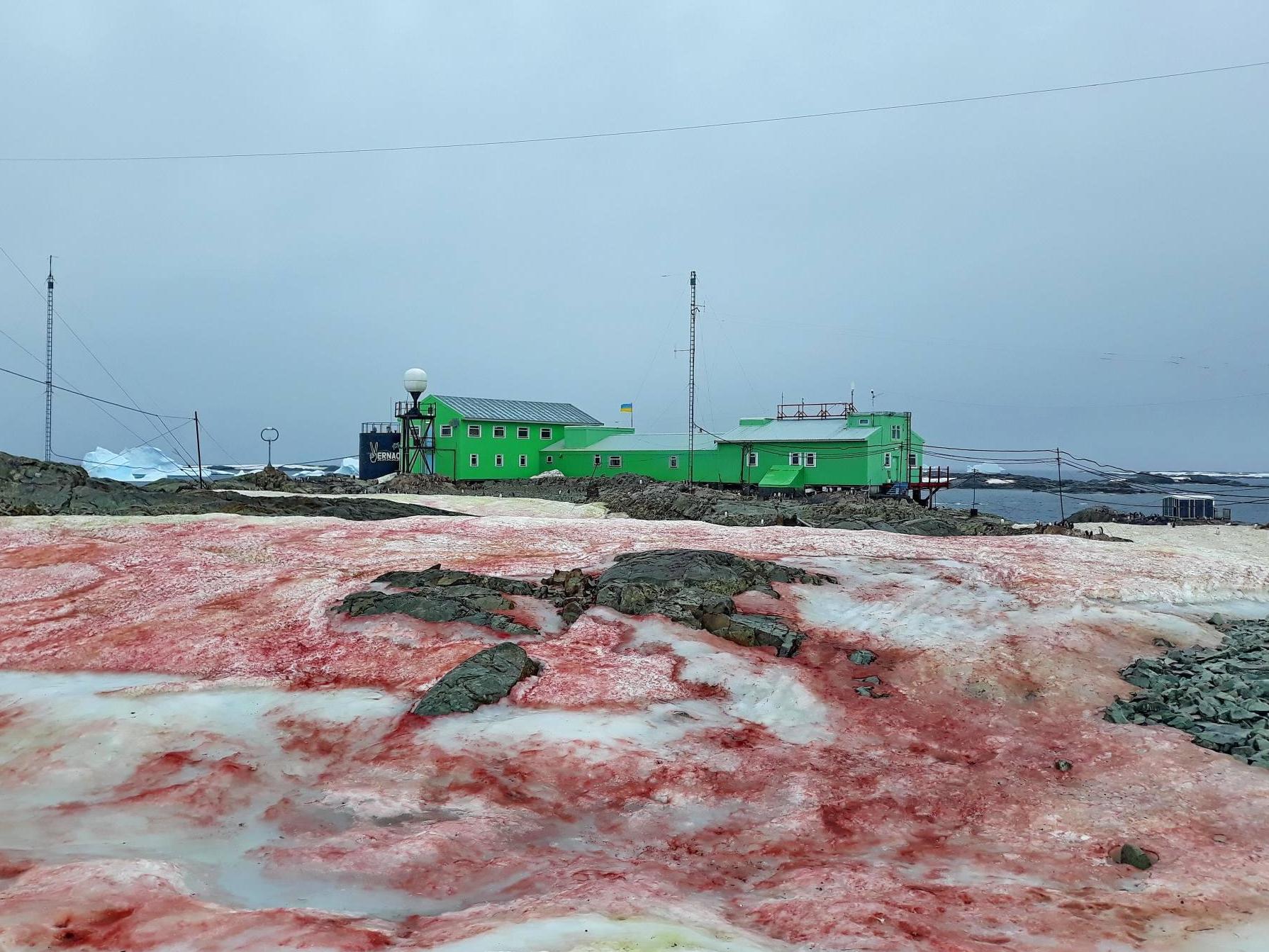Antarctica snow turns ‘blood red’
Scientists say red coloured snow reflects less sunlight and causes ice to melt faster

Your support helps us to tell the story
From reproductive rights to climate change to Big Tech, The Independent is on the ground when the story is developing. Whether it's investigating the financials of Elon Musk's pro-Trump PAC or producing our latest documentary, 'The A Word', which shines a light on the American women fighting for reproductive rights, we know how important it is to parse out the facts from the messaging.
At such a critical moment in US history, we need reporters on the ground. Your donation allows us to keep sending journalists to speak to both sides of the story.
The Independent is trusted by Americans across the entire political spectrum. And unlike many other quality news outlets, we choose not to lock Americans out of our reporting and analysis with paywalls. We believe quality journalism should be available to everyone, paid for by those who can afford it.
Your support makes all the difference.Snow has taken on a sinister-looking blood red colour at a Ukrainian research station due to a type of algae which contributes to climate change.
For several weeks, scientists working at the Vernadsky Research Base in Antarctica have been surrounded by what they call “raspberry snow”.
Images released by Ukraine’s Ministry of Education and Science on Monday showed the phenomenon, which is caused by microscope snow algae when weather conditions are favourable during Antarctica’s summer months.
The ministry explained that the algae is able to survive the extreme cold temperatures during the Antarctic winter and begins to sprout when warmer temperatures arrive in the summer (between October and February).
The algae’s cells have a red carotene layer which protects it from ultraviolet radiation and produces red spots in the snow like “raspberry jam”, the ministry said.
Such snow also contributes to climate change due to its darker colour, a Facebook post by the ministry added.
“Because of the red-crimson color, the snow reflects less sunlight and melts faster,” the post said.
“As a consequence, it produces more and more bright algae.”
When colder temperatures return in the winter, the algae, which is officially known as chlamydomonas nivalis, becomes dormant and the red tint disappears.
The natural phenomenon, which is also known as "watermelon snow", can be observed in the Arctic, the Alps and other high mountain ecosystems, as well as in Antarctica, the Ukraine ministry said.
Antarctica has experienced a nine-day heatwave this month and provisionally recorded its hottest temperature ever – a figure of 18.3C at Argentina’s Esperanza research station.
Last week, images released by NASA revealed nearly a quarter of one Antarctic island’s snow cover was melted during the heatwave, with one geologist noting that the melting was more typical for an area like Alaska than the Antarctic.
“I haven't seen melt ponds develop this quickly in Antarctica,” Mauri Pelto, a geologist at Nichols College in Massachusetts, told NASA's Earth Observatory.
“You see these kinds of melt events in Alaska and Greenland, but not usually in Antarctica.”
Join our commenting forum
Join thought-provoking conversations, follow other Independent readers and see their replies
Comments